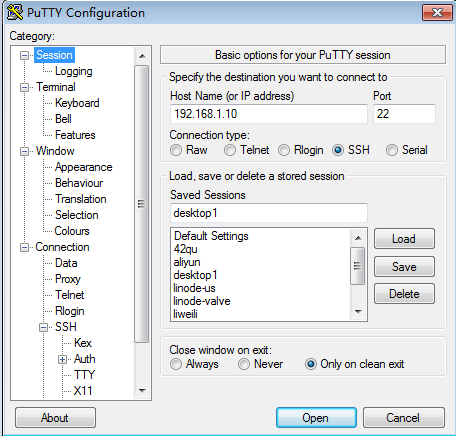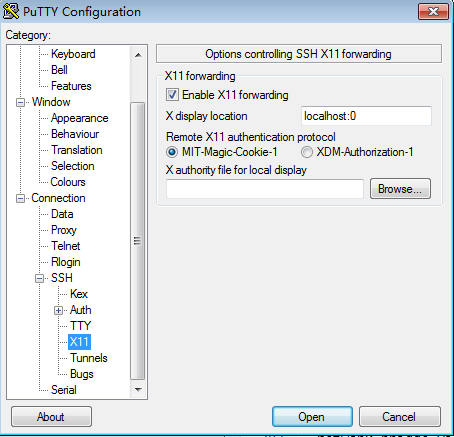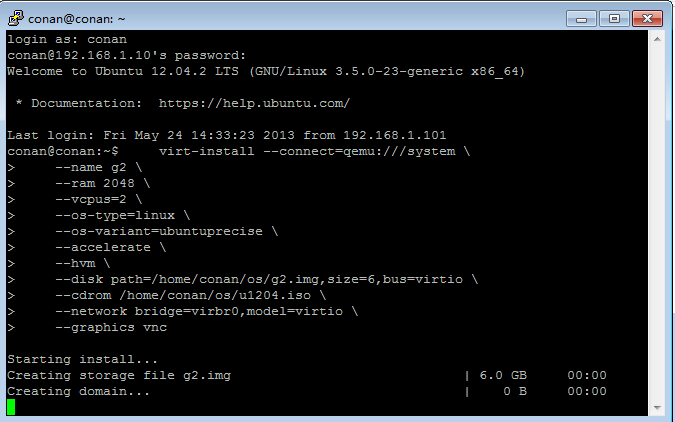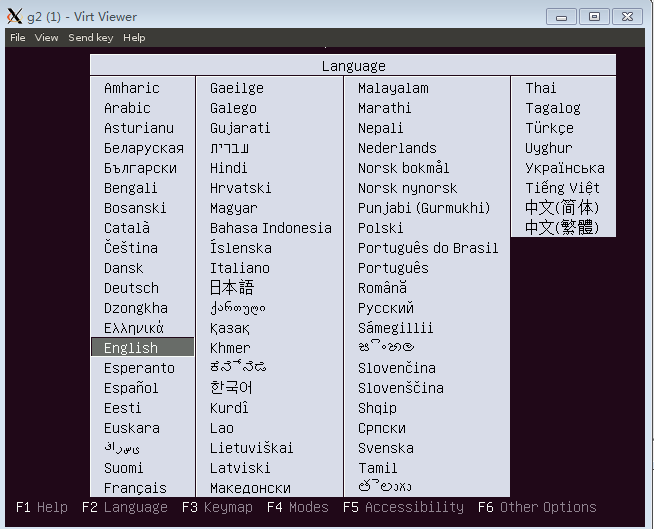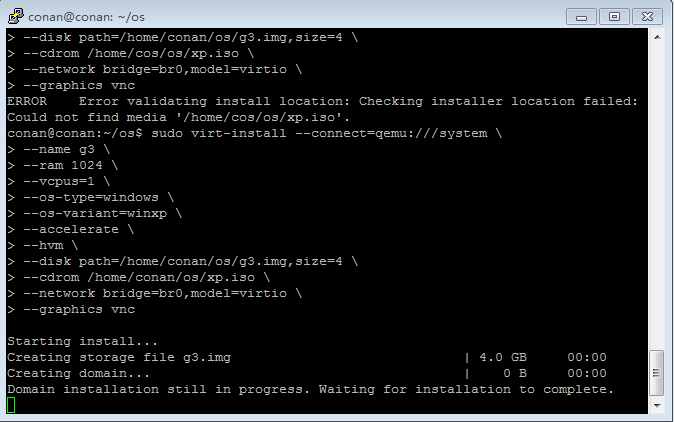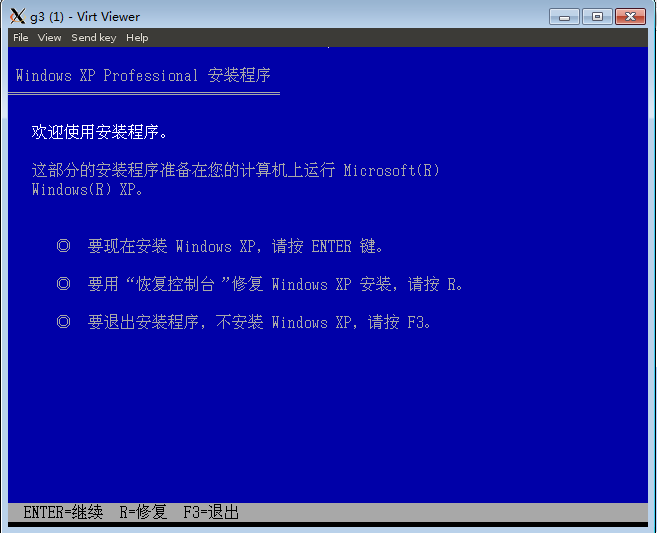自己搭建VPS系列文章
自己搭建VPS系列文章,介绍了如何利用自己的计算机资源,通过虚拟化技术搭建VPS。
在互联网2.0时代,每个人都有自己的博客,还有很多专属于自己的互联网应用。这些应用大部分都是互联网公司提供的。对于一些有能力的开发人员(geek)来说,他们希望做一些自己的应用,可以用到最新最炫的技术,并且有自己的域名,有自己的服务器。这时就要去租一些互联网上的VPS主机。VPS主机就相当于是一台远程的计算机,可以部署自己的应用程序,然后申请一个域名,就可以正式发布在互联网上了。本站“@晒粉丝” 就使用的Linode主机VPS在美国达拉斯机房。
其实,VPS还可以自己搭建的。只要我们有一台高性能的服务器,一个IP地址,一个路由。可以把一台高性能的服务器,很快的变成5台,10台,20台的虚拟VPS。我们就可以在自己的VPS上面的,发布各种的应用,还可以把剩余的服务器资源租给其他的互联网使用者。 本系列文章将分为以下几个部分介绍:“虚拟化技术选型”,“动态IP解析”,“在Ubuntu上安装KVM并搭建虚拟环境”,“VPS内网的网络架构设计”,“VPS租用云服务”。
关于作者:
- 张丹(Conan), 程序员Java,R,PHP,Javacript
- weibo:@Conan_Z
- blog: http://blog.fens.me
- email: bsspirit@gmail.com
转载请注明出处:
第二篇 在Ubuntu上安装KVM并搭建虚拟环境,分为4个章节
- 环境准备
- 安装KVM软件
- 配置桥接网卡
- 创建虚拟机(Ubuntu, winxp)
1. 环境准备
1) 两台计算机,一台是操作计算机Client, 一台是服务器Server
Client: 笔记本电脑, Win7旗舰版,64位,内网ip: 192.168.1.101
Server(Host): 服务器, Ubuntu 12.04LTS 64位,2核CPU,4G内存,内网ip:192.168.1.10,
2) 在server启动时,进入BIOS中开起CPU虚拟化的支持
进入BIOS中,在config –> CPU选项中
- Intel(R) Virtualization Technology (Enabled)
- Intel(R) VT-d Feature (Enabled)
不同BIOS菜单稍有不同。
3) Server上,先安装Openssh-server,Client才能连接
~ sudo apt-get install openssh-server
Clinet通过Putty回家连接Server。
注:以下的所有操作都通过SSH进行。
4) Server系统环境
~ uname -a
Linux conan 3.5.0-23-generic #35~precise1-Ubuntu SMP Fri Jan 25 17:13:26 UTC 2013 x86_64 x86_64 x86_64 GNU/Linux
~ cat /etc/issue
Ubuntu 12.04.2 LTS \n \l
5) 查看CPU的虚拟化支持
~ egrep 'svm|vmx' /proc/cpuinfo
flags : fpu vme de pse tsc msr pae mce cx8 apic sep mtrr pge mca cmov pat pse36 clflush dts acpi mmx fxsr sse sse2 ss ht tm pbe syscall nx lm constant_tsc arch_perfmon pebs bts nopl aperfmperf pni dtes64 monitor ds_cpl vmx smx est tm2 ssse3 cx16 xtpr pdcm sse4_1 xsave lahf_lm ida dtherm tpr_shadow vnmi flexpriority
flags : fpu vme de pse tsc msr pae mce cx8 apic sep mtrr pge mca cmov pat pse36 clflush dts acpi mmx fxsr sse sse2 ss ht tm pbe syscall nx lm constant_tsc arch_perfmon pebs bts nopl aperfmperf pni dtes64 monitor ds_cpl vmx smx est tm2 ssse3 cx16 xtpr pdcm sse4_1 xsave lahf_lm ida dtherm tpr_shadow vnmi flexpriority
我机器是intel的CPU,可以查看vmx的标识
6) Server上,配置ubuntu下载源sources.list,我用的是sohu源。
~ sudo vi /etc/apt/sources.list
deb http://mirrors.sohu.com/ubuntu/ precise main restricted
deb-src http://mirrors.sohu.com/ubuntu/ precise main restricted
deb http://mirrors.sohu.com/ubuntu/ precise-updates main restricted
deb-src http://mirrors.sohu.com/ubuntu/ precise-updates main restricted
deb http://mirrors.sohu.com/ubuntu/ precise universe
deb-src http://mirrors.sohu.com/ubuntu/ precise universe
deb http://mirrors.sohu.com/ubuntu/ precise-updates universe
deb-src http://mirrors.sohu.com/ubuntu/ precise-updates universe
deb http://mirrors.sohu.com/ubuntu/ precise multiverse
deb-src http://mirrors.sohu.com/ubuntu/ precise multiverse
deb http://mirrors.sohu.com/ubuntu/ precise-updates multiverse
deb-src http://mirrors.sohu.com/ubuntu/ precise-updates multiverse
deb http://mirrors.sohu.com/ubuntu/ precise-backports main restricted universe multiverse
deb-src http://mirrors.sohu.com/ubuntu/ precise-backports main restricted universe multiverse
deb http://mirrors.sohu.com/ubuntu/ precise-security main restricted
deb-src http://mirrors.sohu.com/ubuntu/ precise-security main restricted
deb http://mirrors.sohu.com/ubuntu/ precise-security universe
deb-src http://mirrors.sohu.com/ubuntu/ precise-security universe
deb http://mirrors.sohu.com/ubuntu/ precise-security multiverse
deb-src http://mirrors.sohu.com/ubuntu/ precise-security multiverse
deb http://extras.ubuntu.com/ubuntu precise main
deb-src http://extras.ubuntu.com/ubuntu precise main
#更新源
~ sudo apt-get update
2. 安装KVM软件
1) Server上,安装KVM及virt管理软件
~ sudo apt-get install kvm qemu
~ sudo apt-get install virtinst python-libvirt virt-viewer virt-manager
在ubuntu上安装,真的很简单。
3. 配置桥接网卡
1) 在这里我们使用网卡桥接的方式
~ sudo apt-get install bridge-utils
2) 查看网卡的设置
~ ifconfig
eth0 Link encap:Ethernet HWaddr 00:1c:25:a1:99:fc
inet addr:192.168.1.10 Bcast:192.168.1.255 Mask:255.255.255.0
inet6 addr: fe80::21c:25ff:fea1:99fc/64 Scope:Link
UP BROADCAST RUNNING MULTICAST MTU:1500 Metric:1
RX packets:736674 errors:0 dropped:0 overruns:0 frame:0
TX packets:1098750 errors:0 dropped:0 overruns:0 carrier:0
collisions:0 txqueuelen:1000
RX bytes:63783787 (63.7 MB) TX bytes:1540374899 (1.5 GB)
Interrupt:20 Memory:fc200000-fc220000
lo Link encap:Local Loopback
inet addr:127.0.0.1 Mask:255.0.0.0
inet6 addr: ::1/128 Scope:Host
UP LOOPBACK RUNNING MTU:16436 Metric:1
RX packets:1156 errors:0 dropped:0 overruns:0 frame:0
TX packets:1156 errors:0 dropped:0 overruns:0 carrier:0
collisions:0 txqueuelen:0
RX bytes:114090 (114.0 KB) TX bytes:114090 (114.0 KB)
virbr0 Link encap:Ethernet HWaddr be:65:ec:88:86:3d
inet addr:192.168.122.1 Bcast:192.168.122.255 Mask:255.255.255.0
UP BROADCAST MULTICAST MTU:1500 Metric:1
RX packets:0 errors:0 dropped:0 overruns:0 frame:0
TX packets:0 errors:0 dropped:0 overruns:0 carrier:0
collisions:0 txqueuelen:0
RX bytes:0 (0.0 B) TX bytes:0 (0.0 B)
3) 已有的网卡
- eth0是直接插入网线的以太网卡,
- lo是本地网络,本机内部资源
- virbr0是刚才我们装完KVM后,自己生成的虚拟网卡
4) 网卡桥接
我们增加一个叫br0的虚拟网卡,让这个网卡可以和eth0以太网的网卡做桥接
~ sudo vi /etc/network/interfaces
auto lo
iface lo inet loopback
auto eth0
iface eth0 inet manual
auto br0
iface br0 inet static
address 192.168.1.10
netmask 255.255.255.0
gateway 192.168.1.1
bridge_ports eth0
保存,重起网卡设置
~ sudo /etc/init.d/networking restart
再查看网卡的设置
~ ifconfig
br0 Link encap:Ethernet HWaddr 00:1c:25:a1:99:fc
inet addr:192.168.1.10 Bcast:192.168.1.255 Mask:255.255.255.0
inet6 addr: fe80::21c:25ff:fea1:99fc/64 Scope:Link
UP BROADCAST RUNNING MULTICAST MTU:1500 Metric:1
RX packets:91 errors:0 dropped:0 overruns:0 frame:0
TX packets:100 errors:0 dropped:0 overruns:0 carrier:0
collisions:0 txqueuelen:0
RX bytes:6260 (6.2 KB) TX bytes:15470 (15.4 KB)
eth0 Link encap:Ethernet HWaddr 00:1c:25:a1:99:fc
UP BROADCAST RUNNING MULTICAST MTU:1500 Metric:1
RX packets:605 errors:0 dropped:0 overruns:0 frame:0
TX packets:425 errors:0 dropped:0 overruns:0 carrier:0
collisions:0 txqueuelen:1000
RX bytes:112441 (112.4 KB) TX bytes:61529 (61.5 KB)
Interrupt:20 Memory:fc200000-fc220000
lo Link encap:Local Loopback
inet addr:127.0.0.1 Mask:255.0.0.0
inet6 addr: ::1/128 Scope:Host
UP LOOPBACK RUNNING MTU:16436 Metric:1
RX packets:36 errors:0 dropped:0 overruns:0 frame:0
TX packets:36 errors:0 dropped:0 overruns:0 carrier:0
collisions:0 txqueuelen:0
RX bytes:2100 (2.1 KB) TX bytes:2100 (2.1 KB)
virbr0 Link encap:Ethernet HWaddr 2a:b8:36:cf:cc:c6
inet addr:192.168.122.1 Bcast:192.168.122.255 Mask:255.255.255.0
UP BROADCAST MULTICAST MTU:1500 Metric:1
RX packets:0 errors:0 dropped:0 overruns:0 frame:0
TX packets:0 errors:0 dropped:0 overruns:0 carrier:0
collisions:0 txqueuelen:0
RX bytes:0 (0.0 B) TX bytes:0 (0.0 B)
这个时候eth0,已经没有具体的IP地址。IP地址出在了br0的虚拟网上面。
我们ping一下公网ip,看看是不是通的。
~ ping 8.8.8.8
PING 8.8.8.8 (8.8.8.8) 56(84) bytes of data.
64 bytes from 8.8.8.8: icmp_req=1 ttl=46 time=51.7 ms
64 bytes from 8.8.8.8: icmp_req=2 ttl=46 time=50.8 ms
4. 创建虚拟机
通过virt虚拟机管理软件,创建虚拟机(Guest)。
上传2个安装镜像到Server: u1204.iso, xp.iso
放在/home/conan/os目录下面。
1)创建Guest1, Ubuntu 64位LTS 12.04版本(命令行,无可视化界面)
把u1204.iso文件mount一个目录
~ sudo mount -o loop /home/conan/os/u1204.iso /home/conan/os/ubuntu
~ ls /home/conan/os/ubuntu
boot dists EFI isolinux pics preseed ubuntu
cdromupgrade doc install md5sum.txt pool README.diskdefines
创建虚拟机
~ sudo virt-install --connect=qemu:///system \
--name g1 \
--ram 2048 \
--vcpus=2 \
--os-type=linux \
--os-variant=ubuntuprecise \
--accelerate \
--hvm \
--disk path=/home/conan/os/g1.img,size=6,bus=virtio \
--location /home/conan/os/ubuntu \
--extra-args='console=tty0 console=ttyS0' \
--network bridge=br0,model=virtio \
--graphics none
进入安装界面
lqqqqqqqqqqqqqqqqqqqqqqqu [!!] Select a language tqqqqqqqqqqqqqqqqqqqqqqqqk
x x
x Choose the language to be used for the installation process. The x
x selected language will also be the default language for the installed x
x system. x
x x
x Language: x
x x
x C x
x English x
x x
x <Go Back> x
x x
mqqqqqqqqqqqqqqqqqqqqqqqqqqqqqqqqqqqqqqqqqqqqqqqqqqqqqqqqqqqqqqqqqqqqqqqqqj
<Tab> moves; <Space> selects; <Enter> activates buttons
安装系统
lqqqqqqqqqqqqqqqqqqqqqu [!] Configure the network tqqqqqqqqqqqqqqqqqqqqqk
x x
x Please enter the hostname for this system. x
x x
x The hostname is a single word that identifies your system to the x
x network. If you don't know what your hostname should be, consult your x
x network administrator. If you are setting up your own home network, x
x you can make something up here. x
x x
x Hostname: x
x x
x localhost____________________________________________________________ x
x x
x <Go Back> <Continue> x
x x
mqqqqqqqqqqqqqqqqqqqqqqqqqqqqqqqqqqqqqqqqqqqqqqqqqqqqqqqqqqqqqqqqqqqqqqqj
<Tab> moves; <Space> selects; <Enter> activates buttons
安装完成
2). 创建Guest2, Ubuntu 64位LTS 12.04版本(通过VNC,有可视化界面)
在server端,我要打开vnc_listen的端口支持
~ vi /etc/libvirt/qemu.conf
#打开注释
vnc_listen="0.0.0.0"
重启virt软件
~ sudo /etc/init.d/libvirt-bin restart
~ netstat -nlt|grep 5900
tcp 0 0 0.0.0.0:5900 0.0.0.0:* LISTEN
我们需要使用到Xming和putty配合,可以让putty远程传输的VNC信号通过Xming显示出来。
在putty里面,我们要修改一下配置。
启动Xming软件
执行命令
~ sudo virt-install --connect=qemu:///system \
--name g2 \
--ram 2048 \
--vcpus=2 \
--os-type=linux \
--os-variant=ubuntuprecise \
--accelerate \
--hvm \
--disk path=/home/conan/os/g2.img,size=6,bus=virtio \
--cdrom /home/conan/os/u1204.iso \
--network bridge=br0,model=virtio \
--graphics vnc
安装完成
3. 创建Guest3, Winxp(通过VNC,有可视化界面)
注1:这里的winxp必须安装版,ghost是不行的。
注2:windows的安装,必须要使用VNC界面方式,没有命令直接安装的方法
执行命令
sudo virt-install --connect=qemu:///system \
--name g3 \
--ram 1024 \
--vcpus=1 \
--os-type=windows \
--os-variant=winxp \
--accelerate \
--hvm \
--disk path=/home/conan/os/g3.img,size=4 \
--cdrom /home/conan/os/xp.iso \
--network bridge=br0,model=ne2k_pci \
--graphics vnc
安装完成
虚拟机互相通信
我们启动Guest1(ubuntu), Guest3(winxp).
- Client: ip: 192.168.1.101
- Server: ip: 192.168.1.10
- Guest1: ip: 192.168.1.11
- Guest3: ip: 192.168.1.12
他们都在同一网段,相互可以ping通,也可以相互调用。
如果你实验结果和我一样,那么恭喜你,已经实现了通过KVM搭建自己的VPS过程。
错误解决方案
1. 错误代码:
libvirtError: internal error Process exited while reading console log output: char device redirected to /dev/pts/4
Could not access KVM kernel module: Permission denied
failed to initialize KVM: Permission denied
No accelerator found!
解决办法:
~ sudo rmmod kvm_intel
~ sudo modprobe -r kvm_intel
~ sudo modprobe kvm_intel nested=1
下一篇文章,将介绍VPS内网的网络架构设计。
转载请注明出处:


